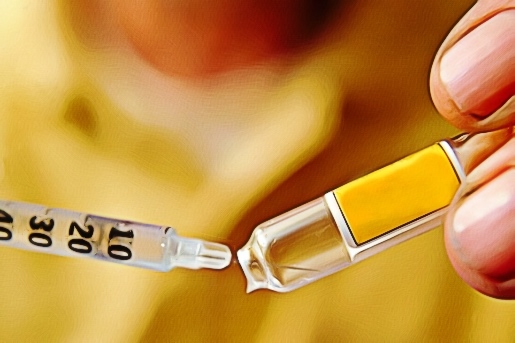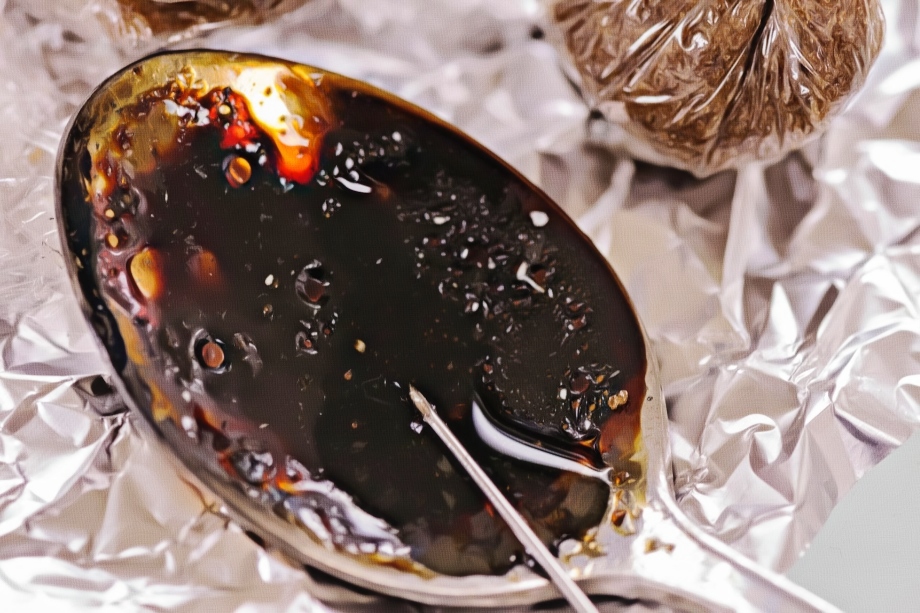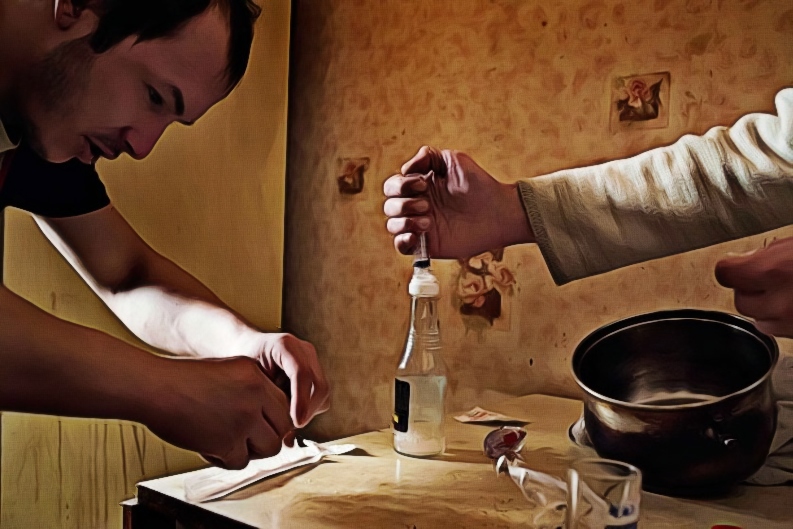Desomorphine was first discovered and patented by a German team working for the pharmaceutical company Knoll around 1920. The drug was then synthesized in the U.S. in the 1930s and patented in 1934.
It is a semi-synthetic opioid that is most closely related to morphine in chemical structure and it produces opioid-like effects, according to the Drug Enforcement Administration (DEA).
Desomorphine has the molecular formula C17H21NO2, and molecular weight 271.35 g/mol. It has a melting point of 189°C and is a solid at room temperature. The salt forms of desomorphine dissolve easily in water.

The drug was never sold commercially in the U.S. because of concerns around its addiction tendency.
The DEA classifies desomorphine as a Schedule I substance. Substances in the DEA Schedule I have no currently accepted medical use in the United States, a lack of accepted safety for use under medical supervision, and a high potential for abuse.
However, desomorphine was used medically in Switzerland under the brand name Permonid as well as in Russia to treat severe pain.
The drug was manufactured by the pharmaceutical company Hoffman- Roche and was available in ampule and suppository forms.
The drug stopped being manufactured commercially in 1952 but was still made until 1981 for one patient in Switzerland. The patient was suffering from an unspecified disease and had specific pain relief needs that required desomorphine.
According to reports, the individual consumed 80 ampules of Permonid daily. Each ampule contained 2 mg of desomorphine, meaning they took 160 mg of desomorphine per day. There is no information about whether this was typical for patients receiving desomorphine, or if it was a result of the individual’s specific needs.
After the patient died the drug ceased to be manufactured and hasn’t been used medically since.
However, abuse of homemade desomorphine was first reported in Siberia in 2003 when Russia started a major crackdown on heroin production and trafficking.
Desomorphine synthesis
Desomorphine synthesis starts from α-chlorocodide. But to get α-chlorocodide you need to create a chemical reaction. This reaction is with codeine or prescription opioids like OxyCotin or Vicodin and thionyl chloride, which is a chemical found in batteries.

The chemical reaction between codeine and thionyl chloride makes α-chlorocodide and then another chemical reaction known as catalytic reduction creates dihydrodesoxycodeine. Finally, the dihydrodesoxycodeine is demethylated to create desomorphine.
It’s worth noting that there are several other ways to end up with desomorphine, but the yield and purity differ depending on which chemicals are added to the mix.
Desomorphine effects
As desomorphine is a type of synthetic morphine it produces opiate-like effects, including pain relief and euphoria.
The drug has a rapid onset and a short half-life. It affects only lasts between two and three hours.
Desomorphine is more potent than morphine, approximately 10 times more powerful than morphine. It was also found to be faster-acting and more effective than morphine for the rapid relief of severe pain.

It has withdrawal symptoms similar to morphine and other opioids. According to Diagnostic and Statistical Manual of Mental Disorders (DSM–5) criteria, signs and symptoms of opioid withdrawal include nausea, vomiting, diarrhea, muscle aches, insomnia, sweating, hyperthermia, among others.
As for negative side effects, early studies showed that desomorphine caused respiratory depression, sedation, dizziness, nausea, vomiting, constipation, mental clouding, hypotension, and urinary retention.
Due to the more severe negative side effects at similar doses to morphine, it was abandoned for medical purposes.
Desomorphine street names
Its street names are Krokodil and Crocodil. Some believe the name comes from the fact that users often develop extreme skin sores, infections, and gangrene that take on a discolored (green, grey, black) scale-like appearance that resembles the skin of a crocodile.
Others have suggested the name comes from the step in the cooking process step where codeine turns into ɑ-Chlorocodide.
Krokodil can also have other variations in spelling such as: Krocodil, Krocodyl, or Krok.
Other common street names include Russian Magic, Crocodile, and Russian Heroin. It has also been referred to as Alligator Drug and Zombie Drug.
Sources:
https://time.com/3398086/the-worlds-deadliest-drug-inside-a-krokodil-cookhouse/
https://www.bhpalmbeach.com/blog/authorities-wary-designer-drug-krokodil-appears-american-streets/
https://www.drugs.com/illicit/krokodil.html
https://www.deadiversion.usdoj.gov/drug_chem_info/desomorphine.pdf
https://www.healthline.com/health/krokodil-desomorphine#krokodil-ingredients
https://www.ncbi.nlm.nih.gov/pmc/articles/PMC4864092/
https://pubmed.ncbi.nlm.nih.gov/25710781/
https://jamanetwork.com/journals/jamadermatology/article-abstract/2089838
https://pubmed.ncbi.nlm.nih.gov/23726898/
https://pharmacy.hsc.wvu.edu/media/1315/krokodil-a-new-drug-of-abuse.pdf
https://www.youtube.com/watch?v=-xF1ejbShZ8
https://jamanetwork.com/journals/jamadermatology/fullarticle/2089838#
https://theconversation.com/krokodil-how-flesh-eating-zombie-drug-is-causing-a-global-crisis-106371
https://theconversation.com/the-rise-and-fall-of-russias-flesh-eating-drug-krokodil-31736
https://www.sciencedirect.com/science/article/abs/pii/S1010518214001619?via%3Dihub
https://www.ncjrs.gov/pdffiles1/nij/grants/254755.pdf
https://harmreductionjournal.biomedcentral.com/articles/10.1186/s12954-016-0105-2/tables/2
https://www.deadiversion.usdoj.gov/drug_chem_info/desomorphine.pdf
https://www.ncbi.nlm.nih.gov/books/NBK526012/
https://pubchem.ncbi.nlm.nih.gov/compound/Desomorphine
https://www.tandfonline.com/doi/full/10.1080/10550887.2012.735570

